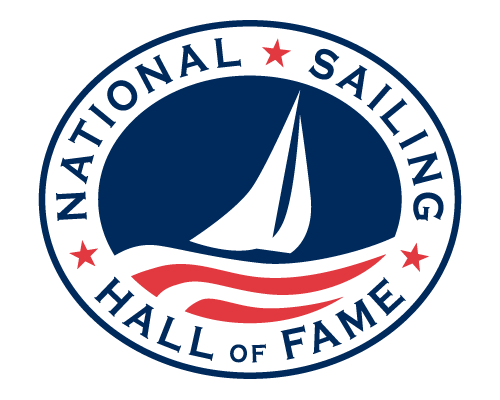
Charles Raymond "Ray" Hunt
May 17, 1908 - August 30, 1978
Somerville, Massachusetts
A Genius at His Trade
A Genius at His Trade is the aptly named biography of C. Raymond Hunt’s long and productive career by author Stan Grayson. Ray Hunt was equally adept at designing both sail and powerboats. His designs get better with age. Some of the classes include the venerable 110, 210 and double-ended keelboats that could plane. He raced in the America’s Cup defender trials on the J/Boat Yankee and skippered the 12-Metre Easterner during the 1962 Cup summer. To describe Ray Hunt as versatile would be an understatement. One of the key ingredients for his success was the ability to use ideas from one marine discipline for another. Hunt found that whether a boat is powered by an engine or a sail, the basic principles of aerodynamics and hydrodynamics apply. For example: after designing and racing the 110, which features a hard chine, Hunt observed, “Sailing on the V (of the hull) is the secret to the 110. I think it’s an idea that could be modified for powerboats.” The deep V hull helped inspire many powerboat designs including the Dick Bertram line. In 1949 Hunt designed a multihull for a client. About the same time, a Canadian inventor was developing a powerboat called a Sea Sled, which had a structural failure and was difficult to steer. Hunt worked on improving the concept for several years. In 1954 he became aware of a new Styrofoam and resin boatbuilding material. By 1964 Ray Hunt recognized the need for an inexpensive powerboat and introduced the world to the Boston Whaler. One of his greatest sailboat designs was the Concordia series of classic yawls introduced in 1938. Most of the 103 of these beautiful 40’ yachts, are kept in Bristol condition today and are the pride at many yacht clubs around the East Coast. As a sailor, he started his career on a promising note by winning the Sears Cup in 1923 and 1925. He won the 5.5 Metre World Championship and was aboard many of his designs in winning a long list of major regattas listed in Grayson’s book. During World War II, then Secretary of the Navy, Charles Francis Adams, who was one of America’s greatest sailors, recruited Hunt to design a fast ship for the U.S. Navy. His design was never built, but Hunt’s concept paid many dividends a few years later. Ray Hunt inspired his son, James “Sham” Hunt who also had a great sailing career highlighted by winning a gold medal in the Olympics as crew for George O’Day in the 5.5 Metre class. Sham also won the Mallory Cup. — Gary Jobson
Preserving America’s Sailing Legacy
Engaging Sailing’s Next Generation
Stay Connected to the National Sailing Hall of Fame
